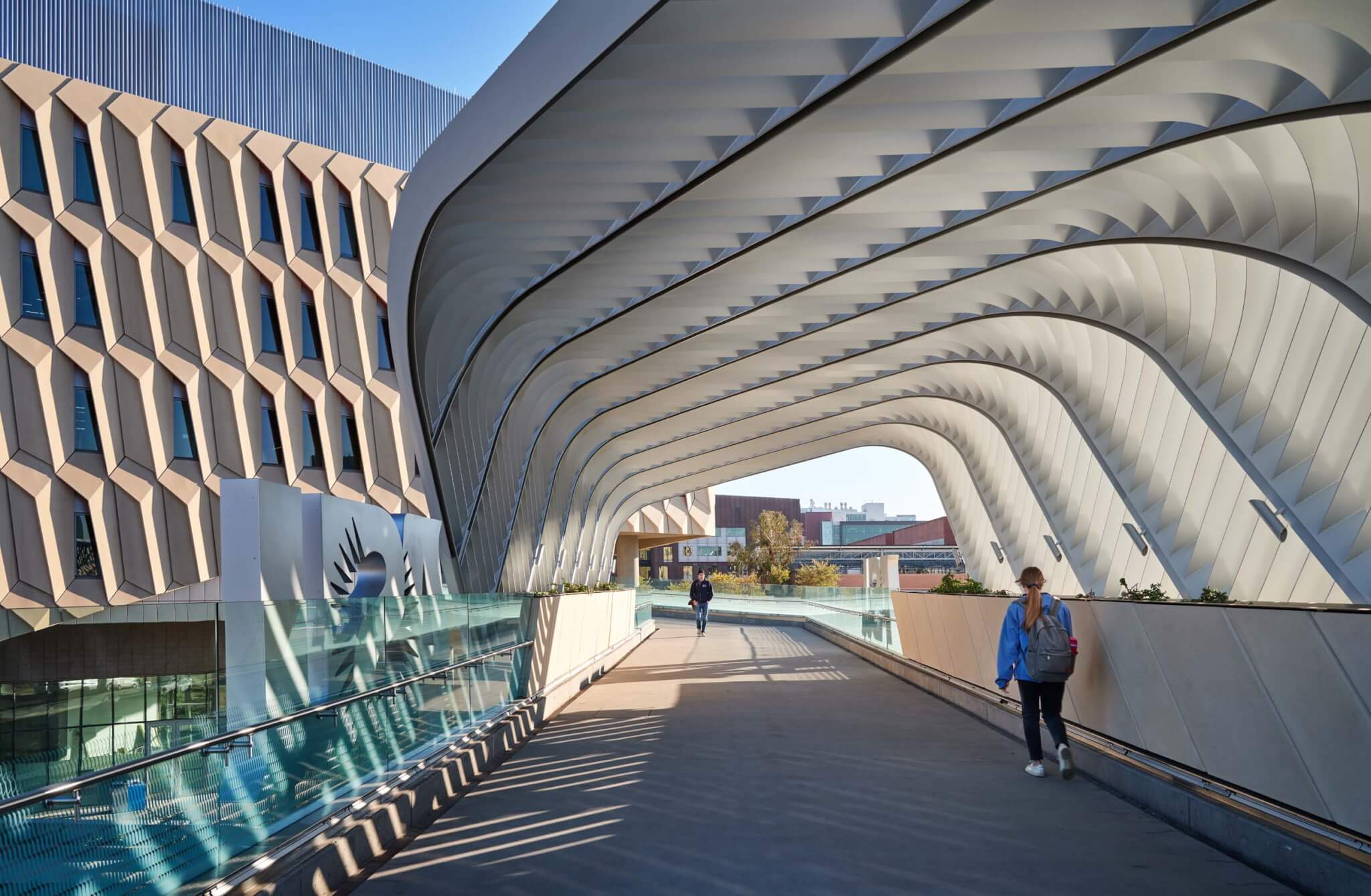Grimshaw and Architekton fight the Arizona glare with a fine-tuned, two-sided approach to exterior windows
Design architect: Grimshaw and Architekton
Location: Tempe, Arizona
Seen from the street under the bright Arizona sun, the Rob and Melani Walton Center for Planetary Health is hard to miss. The research facility, designed by Grimshaw Architects and Architekton, is the latest addition to Arizona State University’s Tempe campus. It houses a suite of interdisciplinary departments and institutes within its 281,000-square-foot layout. Its exterior catches the eye with an interlocking glass-fiber–reinforced-concrete (GFRC) facade and an interior courtyard lined in a glazing and aluminum-composite panelized system.
Considering the arid and sunny locale, the project’s massing and choice of facade material and detailing proved essential to its high-performance credentials. The Walton Center rises from a porous base of columns, taking advantage of prevailing breezes and water-retention basins to cool the complex. That massing is supplemented by an expansive courtyard, which also functions as a passive shading device and means of air circulation. Insulated glass unit modules measuring 7.5 by 3.5 feet produced by Vitro Architectural Glass punctuate the exterior facade and courtyard. Shading helps keep the notorious solar heat gain of Arizona at bay, and the GFRC panels, whose molding mimics the folded surface of saguaro cacti, provide extensive UV protection on the exterior facade while letting in daylight and sustaining views.

For the courtyard, the design team enhanced the flow of filtered light with a cool green-blue mega-panel glazing system prefabricated prior to installation, the colors paying homage to the Grand Canyon’s Havasu Falls in northern Arizona. Crews bolted the panels onto a stainless-steel “drift-track” embedded in concrete floor slabs at a pace of approximately ten per day. For office and laboratory spaces adjacent to the courtyard walls, the team opted for narrow window modules that diffuse natural lighting to support individual and group work. The larger conference and meeting rooms are daylit with floor-to-floor curtain wall glazing.

However, the tolerances of those metal panels was difficult during construction. “The most challenging detail was maintaining a consistent joint size between mega-panel joints and individual metal panel [IMP] joints,” Grimshaw associate principal and architect Eric Johnson told AN. “This was technically complex due to the limitations of construction tolerances on-site. The intended appearance of the skin as a continuous surface was achieved by matching the mega-panel joint size, color, and material to the typical IMP joint size and strictly following specified design tolerances.”


The Rob and Melani Walton Center for Planetary Health received LEED Platinum status, as ASU requires all new construction of university buildings to achieve a rating of LEED Silver. Though that certification is still underway, the design of the project’s fine-tuned enclosure is sure to set a new standard for Arizona.
Matthew Marani, studying city and regional planning at Pratt Institute, writes about architecture and urban design.


